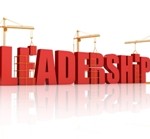To enable women’s advancement where it’s needed most, individual, interpersonal and institutional changes are required.
When it comes to developing gender balance, organisations in male-dominated fields such as venture capital, STEM and the “greedy professions” (as well as in leadership roles within most companies) have a two-fold problem. First, they may face challenges in recruiting women: Deeply entrenched gender stereotypes about which jobs are appropriate for women can affect both women’s career aspirations and hiring managers’ decisions. Second, many women bravely venture into these organisations only to confront a steeper path to advancement than their male peers. In the finance industry, for example, the representation of women across all levels declines from nearly 50 percent to a mere 15 percent as one ascends from the professional to the executive level.
The INSEAD Gender Initiative’s 2019 Women at Work conference, recently held in Singapore, concluded with a research session on how organisations can dislodge the built-up biases that impede women’s career progress, creating new pathways to leadership for deserving women.
The glass cliff
What can be worse than organisations without meaningful career opportunities for women? Arguably, those offering opportunities that can actually be traps. First recognised in a 2005 paper by Professors Michelle Ryan and Alex Haslam at the University of Exeter, the “glass cliff” is a widely noted phenomenon whereby women are installed as leaders at times of potential crisis, thus essentially being set up to fail.
At the INSEAD conference, Ryan said she became aware of this “think crisis – think female” association after reading an article in The Times newspaper, which argued gender balance was bad for business, citing supposed linkages between the presence of women directors and corporate underperformance. Using detailed archival examination, Ryan’s subsequent research found that the newspaper got the causation backwards. It wasn’t that having women on the board was a liability, but rather that women tended to be appointed at moments of poor company performance (as measured by a decline in share price).
Why are women singled out for these unenviable posts? “Stereotypes of women mediate that effect,” Ryan says. “We think women are good at crisis, but we also think women make good scapegoats.”
In later research, Ryan and her co-authors tested the behavioural basis for the glass cliff, launching several studies in which participants were asked to nominate a leader for a fictitious company that was either flourishing or in decline. Men were chosen slightly more often than women to helm successful companies. When the company was in trouble, both male and female participants showed a clear preference for women.
As the concept of the glass cliff gained recognition, some studies and articles appeared purporting to debunk it, while others presented confirming evidence. Apparently contradictory findings may create confusion as to whether the glass cliff is real or not. Ryan has recently tried to make sense of it all with a meta-analysis of all available data relevant to the concept. She found a “small but significant” overall effect, affecting women as well as racial/ethnic minorities who end up balancing precariously on the edge in newly appointed positions of leadership. In related work, Ryan finds that this glass cliff effect varies in size depending on a number of factors. For example, when the new leader is well supported and has more financial resources, the crisis leadership situation is no more likely to bring in a woman leader. It is really the most precarious leadership positions that compel decision makers to see women as a better fit than men.
That the glass cliff is a contingent phenomenon does not make it any less real. Ryan explained: “It didn’t start from theory; it was an explanatory mechanism for data that were out there,” she says. The glass cliff is not universal, but it offers an explanation that sheds light on a set of circumstances that unites women leaders as disparate as Yahoo!’s Marissa Mayer and UK Prime Minister Theresa May, who were handed the rudder of unwieldy ships at moments made especially perilous by their immediate male predecessors.
Ryan’s research underscores a clear need: Companies (and governments) must provide women and minority leaders with a broader range of opportunities to enable them to also show what they can achieve when all is working smoothly.
The emotional basis of backlash
Despite leaders’ good intentions, many men within predominantly male organisations actively resist working with and for women. Backlash has serious implications for women’s advancement, both in its subtler forms and when it manifests as outright sabotage.
Managers should strive to create processes to prevent bias and address discriminatory behaviour swiftly and decisively. In addition, Chiara Trombini, Research Fellow at Harvard Kennedy School, suggests that a psychological intervention that addresses negative emotional reactions could be key to reducing backlash.
Trombini theorises that some men may be unsettled by the stereotype-shattering prospect of a more gender-balanced workplace. This is especially true when women display more assertive behaviour that goes against cultural and societal norms. Men’s feelings of anxiety and threat thus give rise to backlash.
Fortunately, there is a simple intervention proven to calm those exact emotions: self-affirmation. It involves asking people to reflect upon the values that matter most to them or to think about the best version of themselves. The exercise is designed to boost psychological resilience and offer protection from self-doubt in ways that subsequently reduce defensive reactions to threatening information.
Trombini and her co-authors carried out a series of studies with men and women participants to test the emotional threat hypothesis. First, participants were shown videos of women negotiating assertively during a job interview. Then, they were asked to put themselves in the place of a hiring manager. One group of participants did a self-affirmation exercise prior to viewing the videos; a control group did not. No differences were found between the women in the two groups. Among the men, however, the values-affirmed group displayed much more openness to the women interviewees in the video who negotiated assertively, indicating that self-affirmation can lead men to be more accepting of assertive women.
A later study bore out Trombini’s hypothesis about the emotions that precipitate backlash. After viewing videos, participants rated their own feelings of anxiety and apprehension, as well as how hostile and arrogant they felt the job-seeker in the video was. Replicating the first study, the self-affirmation exercise didn’t influence how women participants rated the job-seeker. For men, however, there was a difference. The control group participants perceived both their own anxiety and the job-seeker hostility as higher than did the self-affirmed men similarly evaluating an assertive woman.
In the final study, the researchers manipulated men’s anxiety levels by exposing them either to hyper-competitive, stereotypically masculine work norms (such as overt displays of confidence and physical stamina) in the high anxiety condition, or to psychologically safe work norms (such as collaboration, sharing and valuing others’ perspectives) in the low anxiety condition. Participants then chose between assisting a woman in a demanding task or withholding help (i.e. sabotage). As expected, anxious men were more likely to sabotage, unless they were self-affirmed.
Trombini’s research has implications for corporate cultures and the norms and values they espouse in a larger sense. “Anxiety is important in context,” she says. “Organisations where stress plays a role have heightened potential for stereotyping.” Overall, and especially in high anxiety contexts, self-affirmation can protect against bias by helping men to feel more secure.
Fostering allyship
Combating backlash is an important strategic objective in addressing bias that prevents women from advancing in masculine spaces. An equally crucial objective is cultivating active support for gender balance amongst the male majority – enabling men to be allies.
In research presented at last year’s Women at Work conference, Toni Schmader, the Canada Research Chair in Social Psychology at the University of British Columbia, and her co-authors discovered that conversations with male – and only male – colleagues that were not experienced positively were linked to increased burnout and social identity threat among female STEM professionals. In other words, the absence of clear male allies may hold women back in ways that parallel clear-cut incidents of bias.
At this year’s conference, Schmader talked about her role as co-leader of a research team called Project RISE (Realising Identity-Safe Environments), where she is about to launch a workshop designed to foster gender inclusion in STEM. Her team will recruit more than 400 scientists and engineers working in team environments as workshop participants. “Both men and women say they are highly motivated to be allies in their organisation, but they’re not quite sure how to go about doing it,” Schmader says. The Project RISE workshop will focus on laying the emotional groundwork for allyship as well as developing the necessary skills.
Two features of the workshop show particular promise, as reflected in pilot data. One key component is the affirmation of shared values, which lowers social identity threat for both women and men. Another is a dialogue task where two-person teams respond to questions about diversity and implicit bias, such as “What is one of your biggest concerns or worries when talking about gender bias issues?” In a trial run involving engineering students, both men and women – but especially men – found these dialogues beneficial when their conversation partner was of the other gender.
An honest conversation between two people can be surprisingly impactful, Schmader says. “The more men converse with women about bias, the more they show an increase in the ability to take women’s perspective and believe women can succeed, and there is an indirect effect on support for gender-inclusive policies as well.”
A multileveled approach
Qualified women must perceive that avenues to success are available to them within an organisation. For that to happen, organisations should increase the visibility of female role models and make a concerted effort to signal a wider cultural shift.
In her own talk, INSEAD’s Clarissa Cortland described how the year-long iW50 campaign – spanning the 2017-18 academic year and celebrating the past and present of women at INSEAD, as well as the vision for the future – delivered on three conceptual pillars:
- Highlighting gender-balanced models of leadership through communications campaigns both on- and offline, prominent women speaking on campus, etc.
- Raising awareness through research, alumni- and student-led events
- Engaging men in all INSEAD communities, including faculty, staff, alumni, and notably via the introduction of an official group of male MBA allies called Manbassadors
The iW50 campaign may be over, but the work of the INSEAD Gender Initiative continues. In any large organisation, there is always the danger that progress will pause when gender balance is no longer top of mind. Empowering women to achieve their full potential in spaces where they are underrepresented is not a one-off project, but a long-haul effort requiring maintenance and frequent reassessment.
As INSEAD Gender Initiative’s leader Zoe Kinias said at the conclusion of the conference, “Diversity initiatives need to be perceived and enacted more like change management.”
Source INSEAD




 By Karlyn Borysenko
By Karlyn Borysenko Our client is a 30-year-old mid-market IT services provider offering solutions in security, virtualization, cloud and managed services. They were taken private in 2015, have successfully completed a restructuring to add managed services to their existing VAR business. The company is now focused on the growth phase of their strategy and has been aggressively hiring experienced salespeople. The management team would like to accelerate the pace and are exploring the option of acquiring a complete and operational sales team. The target is 5-7 members with a sales manager currently operating in the mid-west or northeast US.
Our client is a 30-year-old mid-market IT services provider offering solutions in security, virtualization, cloud and managed services. They were taken private in 2015, have successfully completed a restructuring to add managed services to their existing VAR business. The company is now focused on the growth phase of their strategy and has been aggressively hiring experienced salespeople. The management team would like to accelerate the pace and are exploring the option of acquiring a complete and operational sales team. The target is 5-7 members with a sales manager currently operating in the mid-west or northeast US. Last Sunday, comedian actress Julia Louis-Dreyfus, largely known for her work on Seinfeld and Veep, won the Mark Twain Prize, considered the highest honor in comedy. Louis-Dreyfus is the sixth woman to win the award in a male-dominated field. She is also 57, an age at which?especially in entertainment?many actresses are disqualified.
Last Sunday, comedian actress Julia Louis-Dreyfus, largely known for her work on Seinfeld and Veep, won the Mark Twain Prize, considered the highest honor in comedy. Louis-Dreyfus is the sixth woman to win the award in a male-dominated field. She is also 57, an age at which?especially in entertainment?many actresses are disqualified.